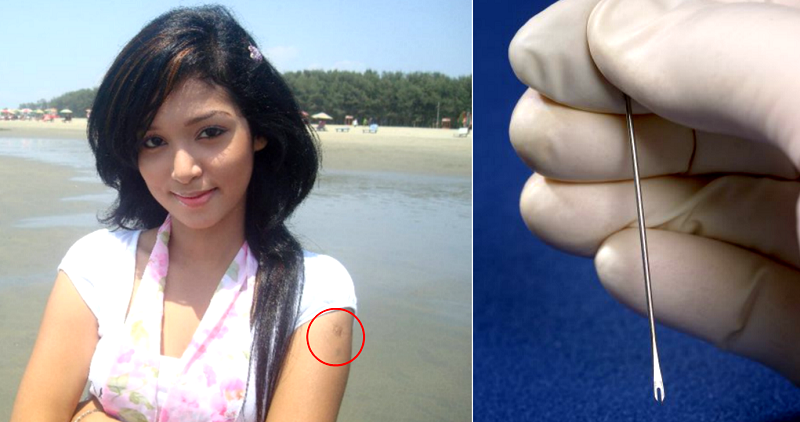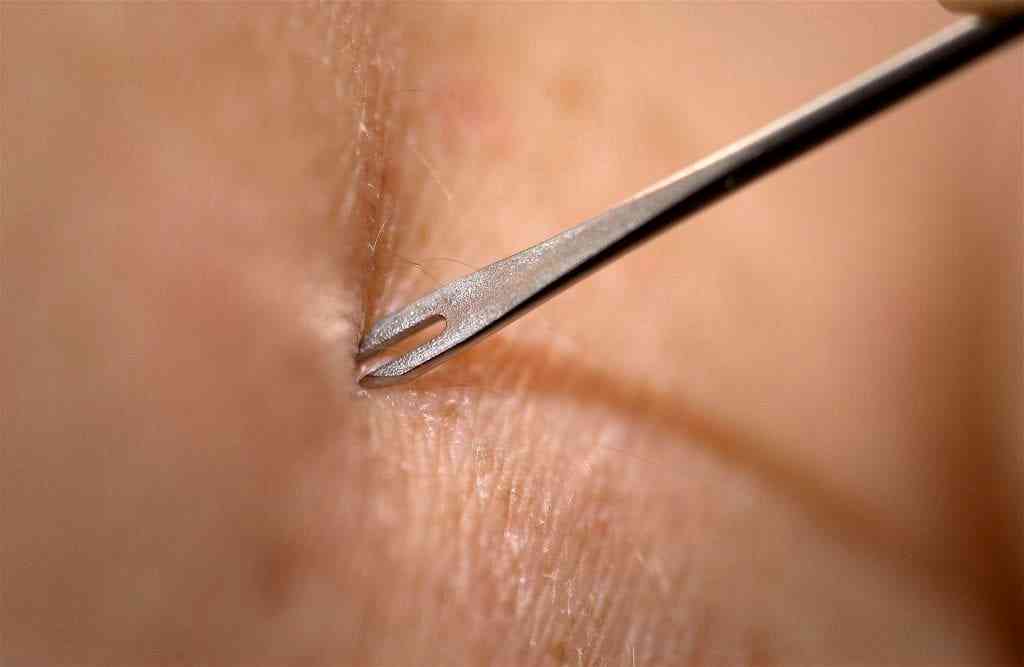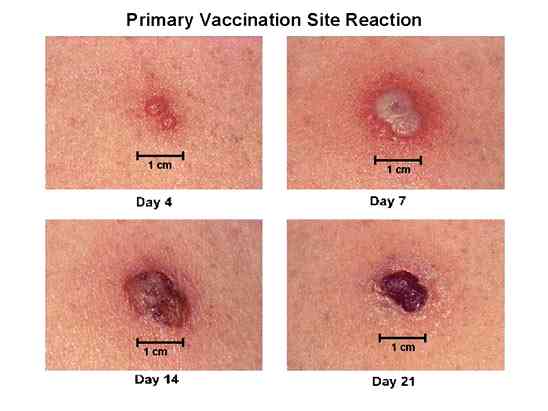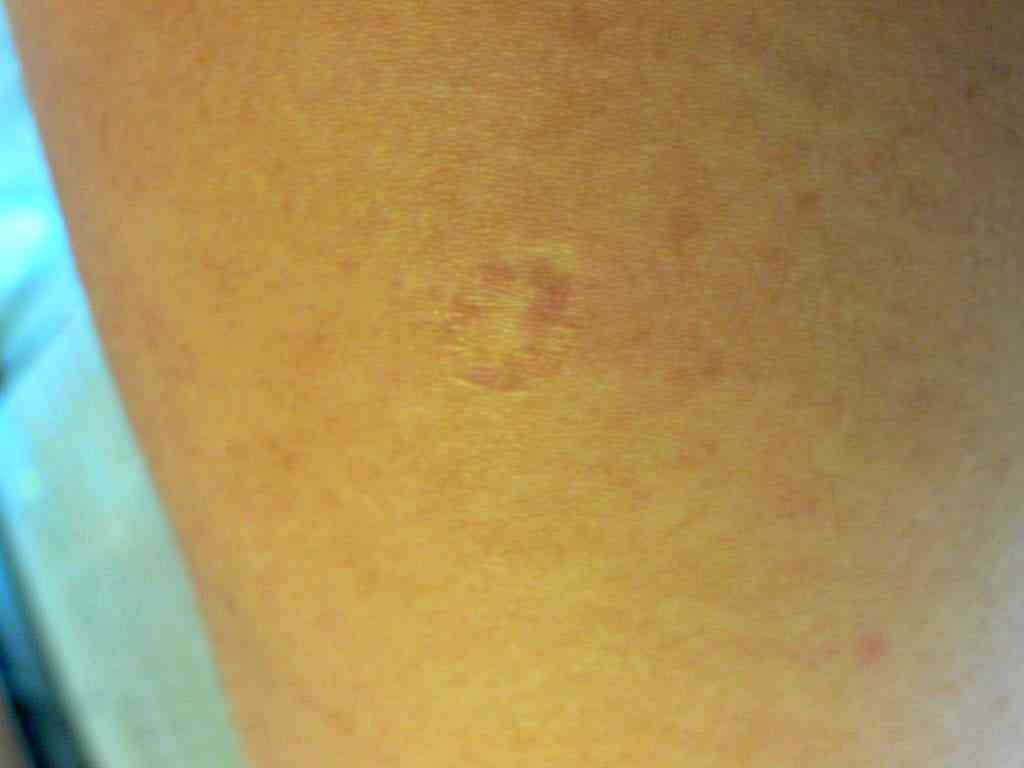The Mystery Behind the Asian ‘FOB Mark’


“What are you doing?” Wei* asked, amused.
Like any given weekend, we were spending it in bed, with him playing PS3 and me playing DS. I’d just so happened to look over and, for the first time, really scrutinized the small scar on his upper left arm. I had noticed it before, and I knew he wasn’t the only boyfriend I’d ever had to have such a marking, but I never really paid it any mind; on that day, however, I was curious.
“I’m just looking at your scar,” I answered, bringing my face closer to his bare arm. “Where did you-“
“I wouldn’t touch it,” he said, pulling away from my inquisitive finger.
Confused, yet intrigued, I persisted. “Where did you get it?”
Wei shrugged. “It’s from a vaccine. You know, a shot?” he explained.
What?
I badgered him for more information. “I’ve never received a vaccine that left a scar. Why did yours scar?”
Wei shrugged again. “Do I look like a doctor to you? All Asians just have it,” he said, casually.
Interesting.
“Why can’t I touch it?” I said, inching my face ever closer to the peculiar scar.
Wei pulled away again. “I just remember hearing that if you don’t have the vaccine, you can probably catch whatever it is I’m vaccinated against. Smallpox, maybe? Anyway, I wouldn’t if I were you.”
Okay…
His answers, although genuine, hadn’t been able to quench my thirst for knowledge. What was the vaccine that was given to these kids? What caused the scarring, sometimes referred to as a “FOB mark”? And, since a previous boyfriend from the Philippines also bore the mark, how many countries did this?
I decided do my own research to find out.
A preliminary Google search yielded some immediate, yet convoluted, answers. For one thing, Taiwan and the Philippines were not the only countries to administer the vaccination; many people from other countries, like South Korea, Mexico, and even the U.S., shared their stories about their mysterious scar. For the Americans, these scar-forming inoculations largely ended when smallpox was considered officially eradicated in 1980, but in other countries, the practice seems to have continued.

The vaccine was administered with a bifurcated needle, or a narrow rod made out of steel approximately 2.5 inches (6 cm) in length with two prongs at the end. The prongs weren’t there to intimidate (although it certainly does appear that way); instead, they held one dose of reconstituted, freeze-dried smallpox vaccine between them in the form of a droplet. The procedure entailed dipping the needle into the vaccine vial, then puncturing the patient’s arm with it 15 times in a small, circular area. If a drop or two of blood streamed down the arm afterwards, it meant that the inoculation was likely a success.

What would follow was perhaps more intense than the procedure itself; after three to four days, a lesion would appear, marking a successful inoculation. The lesion would then become a pus-filled blister, which would eventually drain after several days. The blister would later turn into a scab, ultimately falling off. The three week journey would be filled with keeping the site dry, bandaged, and covered, with the scab being thrown away in a plastic bag to prevent contamination to those not vaccinated.

For Wei, things were checking out — he was born before 1980, so he could certainly bear a smallpox vaccine scar. But my previous boyfriend had been born after 1980 and still had the scar. Was it also smallpox? Or was it something else?
I dug deeper.
Further research indicated that other countries offered another type of vaccine administered to the same site — the BCG vaccine, used to fight against tuberculosis. Although extremely uncommon in the U.S. after 1970, other countries have, and still do, given this vaccine to children before they enter school.
While some countries give the TB vaccination as a single shot, other countries, such as Japan and South Korea, have used a nine-pronged “mega shot” that inoculates children against multiple diseases at once.

As terrifying as the nine prongs may appear, the scars they leave generally disappear before the end of childhood — it’s the ones that are administered by a single needle that end up leaving a visible scar. This is because the vaccine inflames the local area, causing fibrous tissue to form as the skin heals. A nodule is made, which pulls on the neighboring tissue just slightly, creating a dimple. Since the single-pronged TB vaccine is administered superficially, the result is a small, circular scar.

Digging a bit further, I stumbled upon a Reddit thread which mirrored my Filipino ex-boyfriend’s story. The Redditor, who received the BCG vaccine in their South Korean elementary school back in the 70s, was inoculated with what they called the “fire shot“. The name was pretty straightforward, although revealed a scary practice bred out of scarcity: as there weren’t always many needles to go around, the medical personnel administering the vaccine could use the same needle repeatedly by sterilizing it after each use in the flame of an alcohol lamp. This often caused further scarring, however, as the skin now had to contend with searing heat, sometimes even making the skin bubble and blister.
Yikes.
The most interesting thing in all my research, however, wasn’t the medical or procedural information but the cultural impact these scars had on people. I found plenty of forums and online communities where people would come together and celebrate their scars. One forum, predominately composed of members from the U.S., found their scars to be a commonality that linked them to their childhoods. Another group seemed to find the scar sexy, referring to it as a “tika”. Like the Mongolian Spot, the vaccine scar appeared to be one of those interesting things that many people from all walks of life had but ultimately became something that brought people together through a shared experience. In a weird way, it united people.
Wei and I have long-since parted, but for some reason, that conversation has stuck with me through the years. Maybe it’s because it represented a completely different world from my own — one where a deadly disease, once considered a threat, is now all but forgotten, the only physical reminder being the scars on the arms of those born before me. Maybe it’s because the notion that I couldn’t touch a scar struck me as odd, as if the person I was sleeping next to each night was a carrier of a fatal illness and that his left shoulder must be avoided at all costs.
Whatever the case may be, I appreciated learning more about an experience that I hadn’t had for myself and broadening my horizons — one interesting conversation at a time.
*Name has been changed to protect privacy.
Featured Image via via Flickr / nice tika (CC BY-ND 2.0)
Share this Article
Share this Article